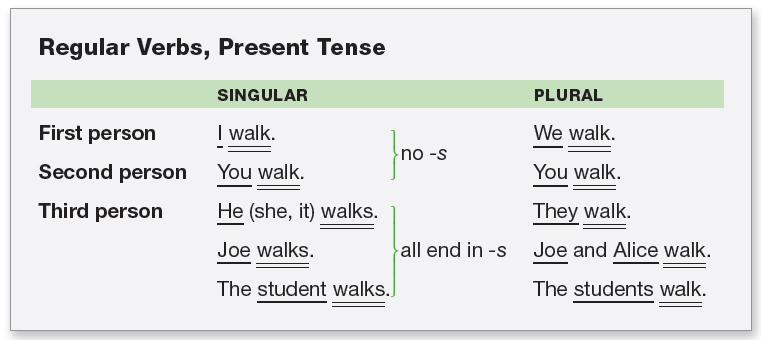Problems with Subject-Verb Agreement
In any sentence, the subject and the verb must match — or agree — in number. If the subject is singular (one person, place, or thing), the verb must also be singular. If the subject is plural (more than one), the verb must also be plural.
| SINGULAR | The skydiver jumps out of the airplane. |
| PLURAL | The skydivers jump out of the airplane. |

Regular verbs (with forms that follow standard English patterns) have two forms in the present tense: one that ends in -s and one that has no ending. The third-
To find problems with subject-
[Leave] [Close]